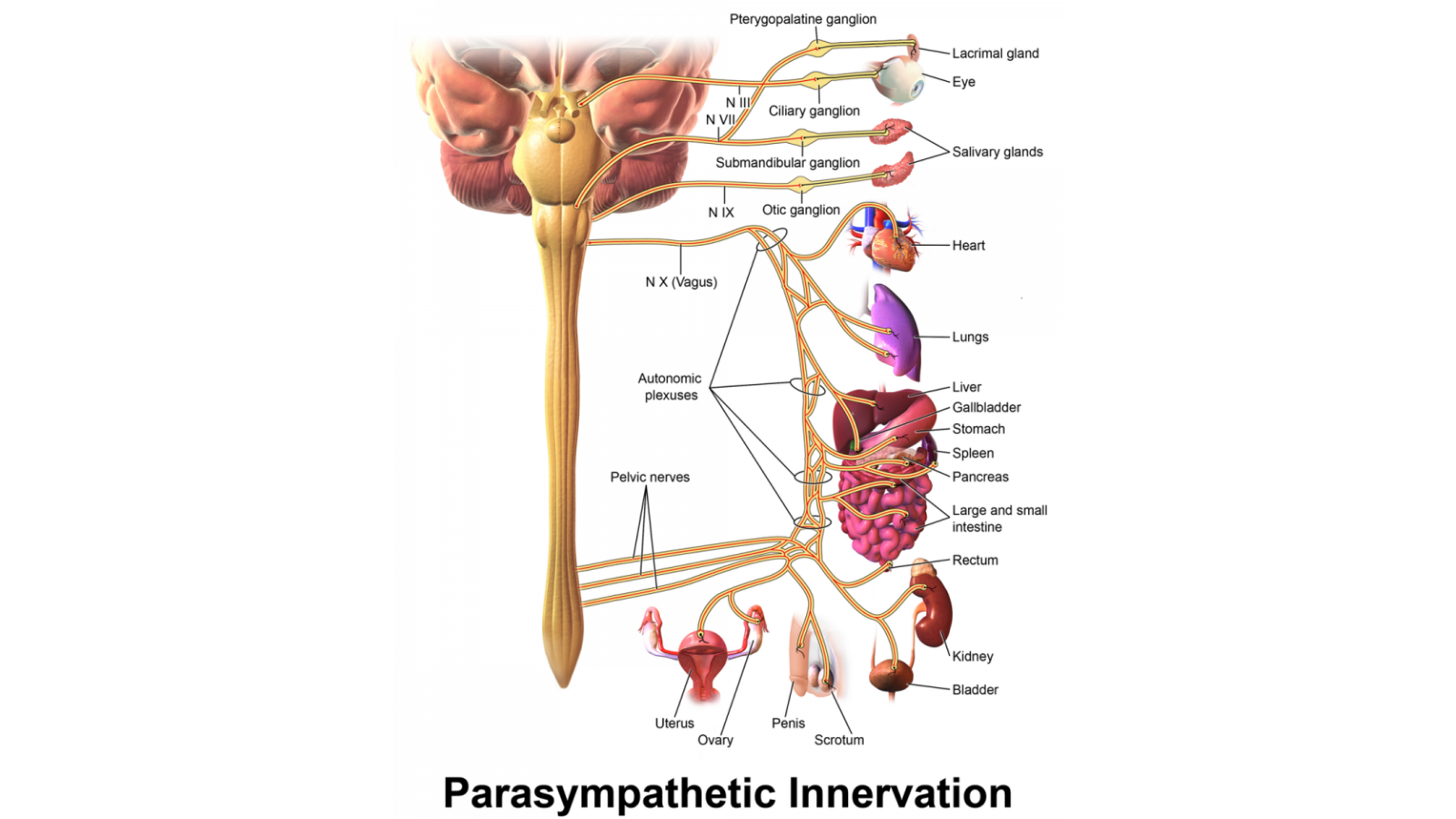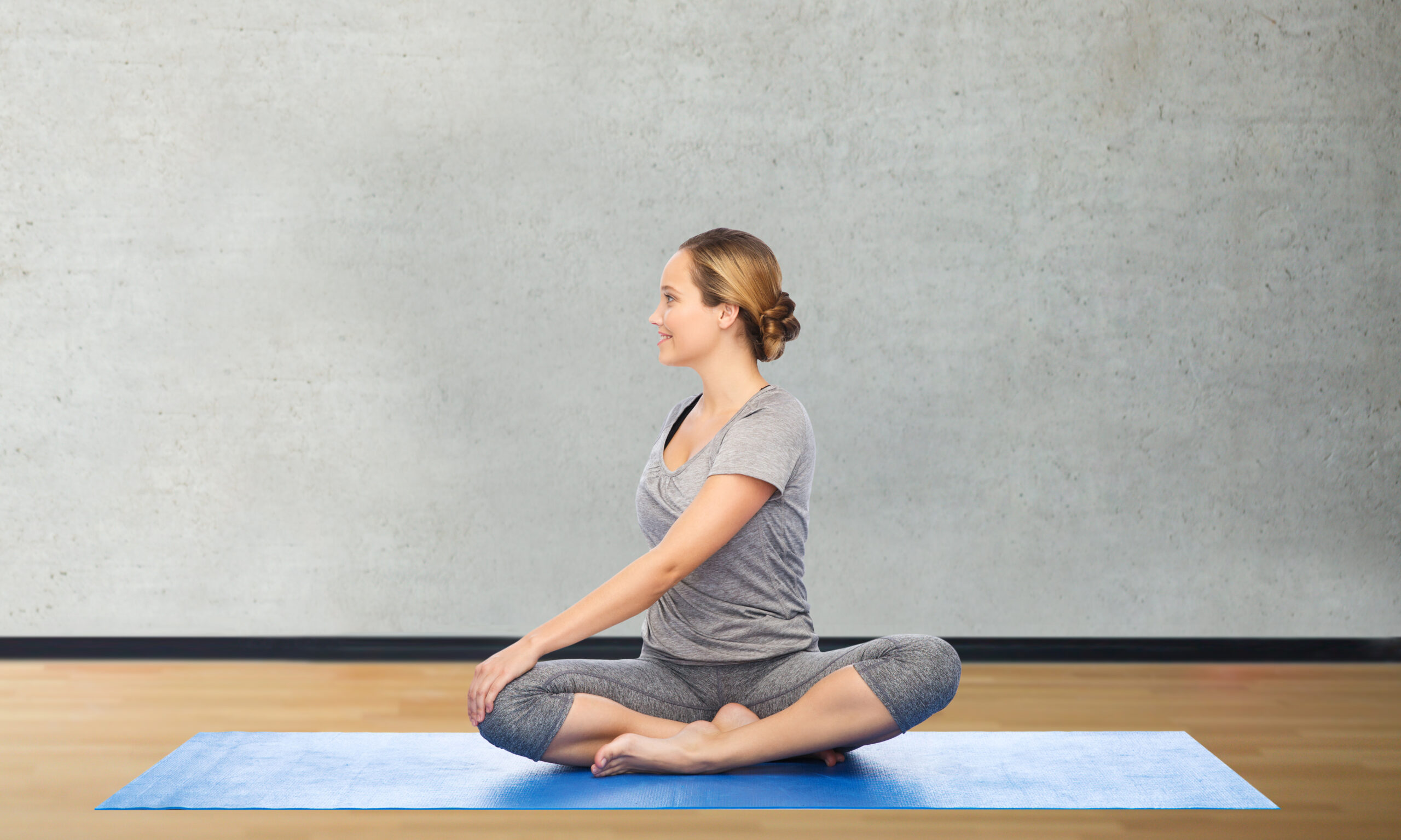6 Vagus Nerve Exercises to Boost Your Well-being – Free Online Yoga Video

Did you know that activation of the vagus nerve in yoga keeps your immune system in check and releases an assortment of hormones and neurotransmitters, such as acetylcholine and oxytocin? This results in reductions in inflammation, reduced allergies, relief from tension headaches, improvements in memory, and feelings of relaxation. (1)
Traditional vagus nerve stimulation (VNS) treatment, also referred to as neuromodulation, involves surgically implanting a bio-electronic device that provides stimulation for the vagus nerve. However, it is also possible to indirectly stimulate your vagus nerve naturally.
What is the Vagus Nerve, and Why Is It So Important?
The vagus nerve passes through the belly, diaphragm, lungs, throat, inner ear, and facial muscles. Importantly, 80 percent of vagus nerve fibers are afferent or sensory nerves which means that they communicate messages from your body back up to your central nervous system. That means that when you move and breathe into these areas of the body, you can influence the functioning of your vagus nerve.
In this post, I share with you additional yoga, breath, and movement practices that help stimulate and balance the vagus nerve.
How The Vagus Nerve Affects Our Health

Irregularities in the vagus nerve can cause tremendous distress in physical and emotional health. Physical consequences can include gastroesophageal reflux disease (GERD), irritable bowel syndrome (IBS), nausea or vomiting, fainting, migraines, tinnitus, autoimmune disorders, and seizures. Mental health consequences include fatigue, depression, panic attacks, or a classic alternation between feeling overwhelmed and shut down.
The Many Health Benefits of Stimulating the Vagus Nerve
Stimulating the vagus nerve helps to regulate both sympathetic hyperarousal and parasympathetic hypoarousal. Since all vagus nerve stimulation initiates a relaxation response, it is important to develop a tolerance for the parasympathetic state without going into dysfunctional hyporarousal in which you might feel collapsed or shut down.
Initially, you might feel sleepy when exploring relaxation. For example, meditation and yoga nidra practices can be deeply relaxing; however, some people fall asleep during practice. Ultimately, the goal is to discover a relaxed yet awake state. However, you might experiment with allowing yourself to sleep, which could be medicinal for your nervous system. In contrast, if you begin to notice that you feel dizzy or nauseated when practicing any vagus nerve interventions, then back off and proceed slowly and gently with just a few minutes daily.
Best Exercises to Stimulate the Vagus Nerve: Yoga, Breath, and Relaxation

Natural vagus stimulation explores gentle yoga breath and movement interventions that aim to stimulate and balance the vagus nerve. Slowing down the exhalation is considered the most direct way to balance the vagus nerve. This is especially effective when there is an emphasis on emptying the lungs through the engagement of the diaphragm and abdominal muscles. This also provides a gentle massage to the digestive organs. Emphasizing a slow, lengthened exhalation stimulates nerve fibers in the lungs to initiate a relaxation response.
Yogic Breathing Exercise for the Vagus Nerve # 1: How to Do the Straw Breath (Kaki pranayama)
Stressful and traumatic situations can cause shallow breathing, holding of the breath, or tightness in the chest. Every inhalation engages the sympathetic nervous system (SNS), and your exhalation stimulates the parasympathetic nervous system (PNS). Slowing down and giving resistance to your exhalation trains your body to use the diaphragm which can help you to feel calmer and more relaxed.
This next breath exploration involves imagining a straw between your lips. (You can practice this breath with a physical straw as well.)
- To begin, take a gentle inhalation.
- Now, purse your lips and exhale very slowly through your imagined straw until your lungs are 80 percent empty.
- Then, close your mouth and slowly exhale the last 20 percent through your nose as you engage the muscles in your abdomen and diaphragm to expel all of your air.
- Allow your next inhalation to come naturally, and take three regular breaths.
- If you would like, repeat this exercise 2 or 3 more times. Once you are complete, notice any changes in how you feel mentally, emotionally, and physically.
Vagus Nerve Exercise # 2: Release Tension in your Eyes
A lovely way to stimulate the vagus nerve is by relaxing the eyes and releasing the muscles in the neck. The eyes are regulated by 12 extraocular muscles that extend down into the suboccipital muscles that surround the upper cervical vertebrae. We can often see in each other’s eyes whether we feel stressed or relaxed. This is because the extraocular nerve endings have a direct connection to the vagus nerve.
Eye movements can increase blood flow to the vertebral artery and stimulate the vagus nerve as it passes through the upper neck. Relaxing the muscles in the eyes engages an innate reflex called the oculocardiac reflex (OCR) which initiates a parasympathetic response to slow down the heart rate and lower blood pressure. An individual can faint if this response happens too quickly. However, we can also stimulate the (OCR) with gentle pressure on the eyes, which can have a calming effect on the nervous system. You can relax your eyes through the use of an eye pillow placed over your eyes during relaxation or by placing the palms over the eyes and applying very light pressure.
Vagus Nerve Exercise # 3: Oculocardiac Convergence
You can also stimulate the vagus nerve through movements of the eyes. For example, oculocardiac convergence has been used to reduce anxiety and panic by repeatedly converging the eyes on a nearby focal point and then shifting to a distant focal point. (2)
- Hold a pencil or small object about 4 to 6 inches in front of your face. Allow your eyes to focus on this object for about 20 to 30 seconds.
- Shift your focus to look off in the distance for about 20 to 30 seconds. Continue back and forth for about 4 cycles and then softly relax your eyes.
Vagus Nerve Exercise # 4: Yoga Stretches to Release Your Neck

Your vagus nerve passes right behind the sternocleidomastoid muscles (SCM) and in front of the scalenes, which tend to be the tightest muscles in the neck. Gentle stretching of the SCM and scalenes in the neck also tends to produce a relaxation response through the engagement of the vagus nerve. (3)
Follow These 4 Yoga Practice Steps to Release Your Neck
- Explore how it feels to bring your right ear toward your right shoulder without turning your head. Then, bring your eyes toward the right.
- Take 4 or 5 breaths into the left side of your neck and then bring your head back to the center as your eyes come forward again.
- Repeat this on the left side and notice how you feel.
- You can also explore how it feels to bring your right ear to the right shoulder as you send your eyes and gaze to the left. Once again, hold this shape for about 4 or 5 breaths and then switch sides.
Vagus Nerve Exercise # 5: A SEATED Yoga Pose for Settling the Nervous System

Simple seated yoga stretches can help to balance the vagus nerve as you move the spine, belly, chest, and throat. This next practice can be done on the floor or seated toward the front of a chair.
Easy Seated Yoga Twist (Parvrtta Sukhasana)
You can practice this twist either on the floor in Sukhasana or sitting in a chair.
- Come into a twist by placing your left hand on the outside of your right leg while placing your right hand behind you or in the center of your chair.
- On an inhalation, lengthen your spine, and on your exhalation, deepen the twist of your spine toward the right.
- You can also bring your chin to the right and gaze over your shoulder.
- Take several breaths here to massage your digestive organs, and then return to the center.
- When you are ready, switch sides and repeat to the left.
- Once you are complete, return to the center and notice how you feel mentally, physically, and emotionally.
Free Online Yoga Video with Dr. Arielle Schwartz: Mini Yoga Flow to Stimulate the Vagus Nerve
Also, read...
Fascia and the Vagus Nerve: Healing from the Inside Out
Yoga Anatomy: The Vagus Nerve, Amygdala and the Stress Response
The Vagus Nerve and Eye Movements
Related courses

Dr. Arielle Schwartz is a licensed clinical psychologist, wife, and mother in Boulder, CO. She offers trainings for therapists, maintains a private practice, and has passions for the outdoors, yoga, and writing. She is also the developer of Resilience-Informed Therapy which applies research on trauma recovery to form a strength-based, trauma treatment model that includes Eye Movement Desensitization and Reprocessing (EMDR), somatic (body-centered) psychology, mindfulness-based therapies, and time-tested relational psychotherapy.



